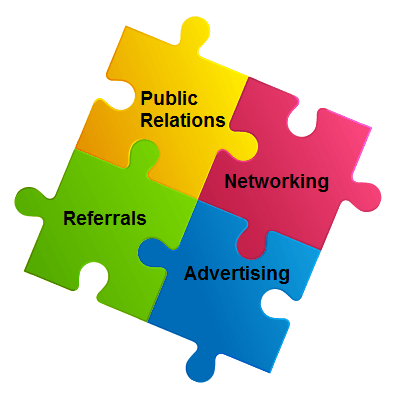The 4 Core Elements of a Successful Lead Generation Strategy
I often get asked by business owners, organizations, franchises and associations which one or two or three marketing tactics have been the most successful for businesses or have the greatest results.
Public relations, networking, referrals, and advertising are often the answers to that question, but the answers are different for each specific business and organization.
Today’s integrated lead generation program consists of always communicating, sharing information, and solving problems, all through an educational approach that blends the use of public relations, networking, referrals, and advertising.
Essentially, a lead is generated through information collection. That information collection could come as the result of a shopper sharing contact information in exchange for a coupon, or a person filling out a form to download an educational piece of content.
1. Public Relations
There are two kinds of PR: publicity (which is going to fade away) and there’s public relations which is story telling. Storytelling is going to get more and more important. A core principle of marketing is getting the word out about your business to your target market. In marketing there are many ways to do this. PR just happens to be the one that is powerful, credible and a low-cost (or no-cost) tool, but often underutilized by start-ups and organizations.
2. Networking
This is the only marketing tool you can count on in any economy. Networking with colleagues, strategic partners, vendors, reporters, customers, and local communities is a high quality way to increase revenues and share information, referrals, endorsements, and assist other people. The two cornerstones of networking you must master is the follow-up and differentiation.
3. Referrals
Generating referral can and do happen, by luck, but the more you can formalize the process or put a process in place to make them happen, the quicker you’ll realize increased sales through referrals. Generating referrals today can be easy, viral, organized, automatic and profitable.
4. Advertising
Most SMBs dislike advertising because of awful past results. Advertising works, it’s just that most of the creatives that produce or sales professionals that sell advertising don’t have a clue how to make it work. Your advertising must be highly targeted (focused on a target market), done at the right time (when ideal customers are looking for help) and in the right place (where they’ll find you). Successful advertising is goal-directed, focused on audience and message and sells not a product or service but action. Before you can begin working, you need a clear idea of the needs and attitudes of your audience and the action you want them to take.
The measure of any lead generation marketing program is the quality and volume of leads it brings in. By generating the right leads, you’ll queue up your sales efforts for success, and ultimately drive revenue for your business.





